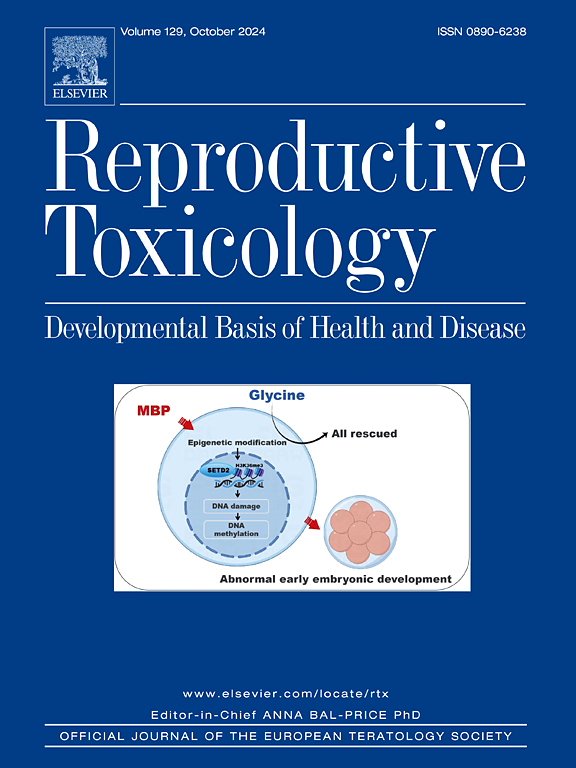Association between menopausal age and smoking status defined using urinary cotinine or tobacco-specific nitrosamine metabolite 4-(methylnitrosamino)-1-(3-pyridyl)-1-butanol: The Korea National Health and Nutrition Examination Survey 2016–2018
IF 3.3
4区 医学
Q2 REPRODUCTIVE BIOLOGY
引用次数: 0
Abstract
This study aimed to establish the optimal cut-off values for urinary cotinine and 4-(methylnitrosamino)-1-(3-pyridyl)-1-butanol (NNAL)to determine smoking status in Korean women over 20 years of age and to assess the correlation of these biomarkers with reproductive health, particularly menopausal age, in postmenopausal women. Utilizing data from the 7th edition of the Korea National Health and Nutrition Examination Survey (2016–2018), researchers included postmenopausal women aged 40–60 years who were within 5 years of menopause. Self-reported smoking status was aligned with biomarkers levels to calculate optimal cut-off values, classifying a total of 503 postmenopausal women into four groups: never smokers (cotinine <0.738 ng/mL, NNAL <1.595 pg/mL), secondhand smokers (SHSrs; cotinine 0.738–37.7 ng/mL, NNAL 1.595–12.35 pg/mL), light current smokers (cotinine 37.7–837 ng/mL, NNAL 12.35–91.55 pg/mg), and heavy current smokers (cotinine >837 ng/mL, NNAL >91.55 pg/mL). Differences in menopausal age were analyzed using Kaplan–Meier curves and log-rank tests. The results indicated significant differences in menopausal age between never smokers and heavy smokers (51.4 ± 3.9 vs. 49.6 ± 3.0 years, p = 0.001) as well as SHSrs and heavy smokers (51.4 ± 3.3 vs. 49.6 ± 3.0 years, p = 0.001) when applying urinary cotinine cutoff values. However, no significant differences in menopausal age were observed based on NNAL cutoffs. These findings suggest urinary cotinine levels correlated more strongly with menopausal age than using urine NNAL levels for defining smoking status among postmenopausal Korean women. Heavy current smokers, as identified by urinary cotinine levels, experienced menopause at an earlier age compared to never smokers and SHSrs.
使用尿可替宁或烟草特异性亚硝胺代谢物4-(甲基亚硝胺)-1-(3-吡啶基)-1-丁醇确定绝经年龄与吸烟状况之间的关系:韩国国家健康与营养调查2016-2018
本研究旨在建立尿可替宁和4-(甲基亚硝胺)-1-(3-吡啶基)-1-丁醇(NNAL)的最佳临界值,以确定20岁以上韩国女性的吸烟状况,并评估这些生物标志物与绝经后女性生殖健康(尤其是绝经年龄)的相关性。研究人员利用第七届韩国国民健康和营养调查(2016- 2018)的数据,纳入了绝经5年内40-60岁的绝经后妇女。自我报告的吸烟状况与生物标志物水平相一致,以计算最佳临界值,将503名绝经后妇女分为四组:从不吸烟者(可替宁837ng/mL, NNAL >91.55pg/mL)。采用Kaplan-Meier曲线和log-rank检验分析绝经年龄的差异。结果显示,应用尿可替宁临界值时,从不吸烟者和重度吸烟者的绝经年龄(51.4±3.9岁比49.6±3.0岁,p=0.001)以及重度吸烟者和重度吸烟者的绝经年龄(51.4±3.3岁比49.6±3.0岁,p=0.001)存在显著差异。然而,根据NNAL截止值,绝经年龄没有明显差异。这些发现表明尿可替宁水平与绝经年龄的相关性比用尿NNAL水平来定义绝经后韩国妇女的吸烟状况更强。根据尿可替宁水平,重度吸烟者比从不吸烟者和重度重度吸烟者绝经年龄更早。
本文章由计算机程序翻译,如有差异,请以英文原文为准。
求助全文
约1分钟内获得全文
求助全文
来源期刊

Reproductive toxicology
生物-毒理学
CiteScore
6.50
自引率
3.00%
发文量
131
审稿时长
45 days
期刊介绍:
Drawing from a large number of disciplines, Reproductive Toxicology publishes timely, original research on the influence of chemical and physical agents on reproduction. Written by and for obstetricians, pediatricians, embryologists, teratologists, geneticists, toxicologists, andrologists, and others interested in detecting potential reproductive hazards, the journal is a forum for communication among researchers and practitioners. Articles focus on the application of in vitro, animal and clinical research to the practice of clinical medicine.
All aspects of reproduction are within the scope of Reproductive Toxicology, including the formation and maturation of male and female gametes, sexual function, the events surrounding the fusion of gametes and the development of the fertilized ovum, nourishment and transport of the conceptus within the genital tract, implantation, embryogenesis, intrauterine growth, placentation and placental function, parturition, lactation and neonatal survival. Adverse reproductive effects in males will be considered as significant as adverse effects occurring in females. To provide a balanced presentation of approaches, equal emphasis will be given to clinical and animal or in vitro work. Typical end points that will be studied by contributors include infertility, sexual dysfunction, spontaneous abortion, malformations, abnormal histogenesis, stillbirth, intrauterine growth retardation, prematurity, behavioral abnormalities, and perinatal mortality.
 求助内容:
求助内容: 应助结果提醒方式:
应助结果提醒方式:


